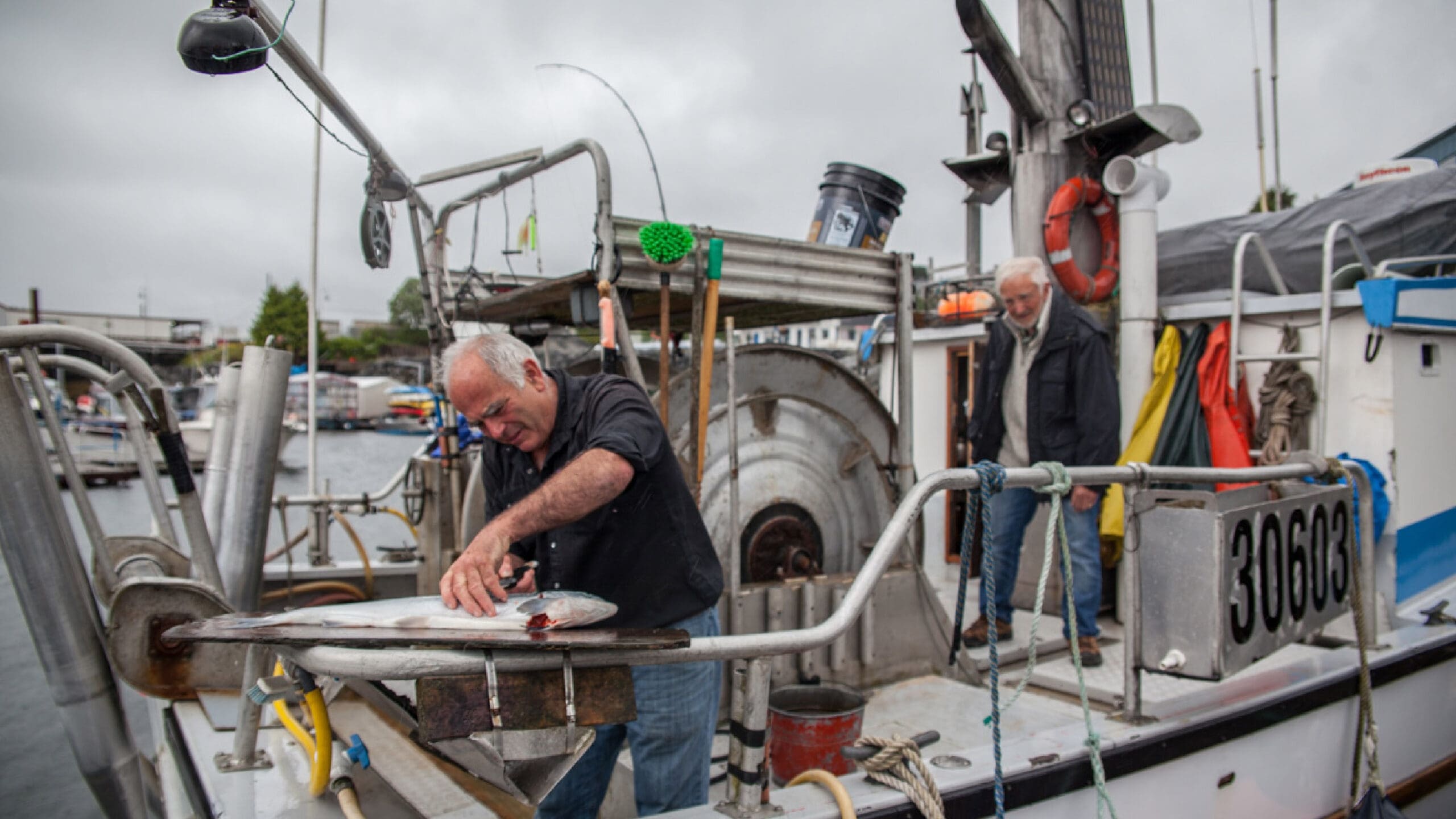Salmon Gillnetting Is Open!
Fishing StoriesThe Department of Fisheries and Oceans has just announced the first sockeye salmon gillnet openings of the year. Starting June 17th, three of our fishermen, Barry Marcotte, Inge Noringseth and Dean MacDonald, will hit the seas!

The Department of Fisheries and Oceans has just announced the first sockeye salmon gillnet openings of the year. Starting June 17th, three of our fishermen, Barry Marcotte, Inge Noringseth and Dean MacDonald, will hit the seas! They will be fishing Nass Sockeye north of Prince Rupert and will be heading out to set their nets at the crack of dawn! Wish them luck!
What is gillnetting and how does it work?
A gillnet is a net which lays vertically in the water like a fence (not to be confused with a drift net, which floats with the current in the open ocean). Gillnets are help upright in the water by lead weights that line the bottom and cork floats at the top. Fish swim through the net and get stuck where their bodies are too large to fit through. This is usually just behind their gills which prevents them from escaping. The net mesh is specifically sized so that larger fish will bounce off the net and swim around it, and smaller fish will pass through it without disturbance.
This fishing method allows fishermen to catch only the target fish species and drastically reduces the by-catch associated with other types of fishing. Gillnetting can even discriminate between specific species of salmon. For example, we fish with a 5-inch mesh net for sockeye salmon in the Nass, as most other species of salmon will not become ensnared when using that mesh size. The mesh size varies depending on the run; anywhere from 4 ½-inch in Barkley Sound up to 5 ⅛-inch in the Skeena.
In fact, gillnetting is the most targeted fishing method used on the BC coast. The gillnet is laid specifically to intercept the path of migrating salmon, so it is incredibly rare to catch any other species of fish or marine life. Not only is a gillnet set in a specific place with a specific mesh size, it is also set at the depth that the target species tends to swim at.
When we’re fishing for one species of salmon, occasionally, we’re not allowed to retain another type (for example, coho or chinook, which, in some areas, might have poor numbers). When this happens, the fish is put into a revival tank where air is pumped through to ensure the fish is strong and healthy before it gets put back into the ocean.
Taste the Skipper Otto difference today! Dive into our unique model and how it works, and learn more about small-scale, independent fishing families.
